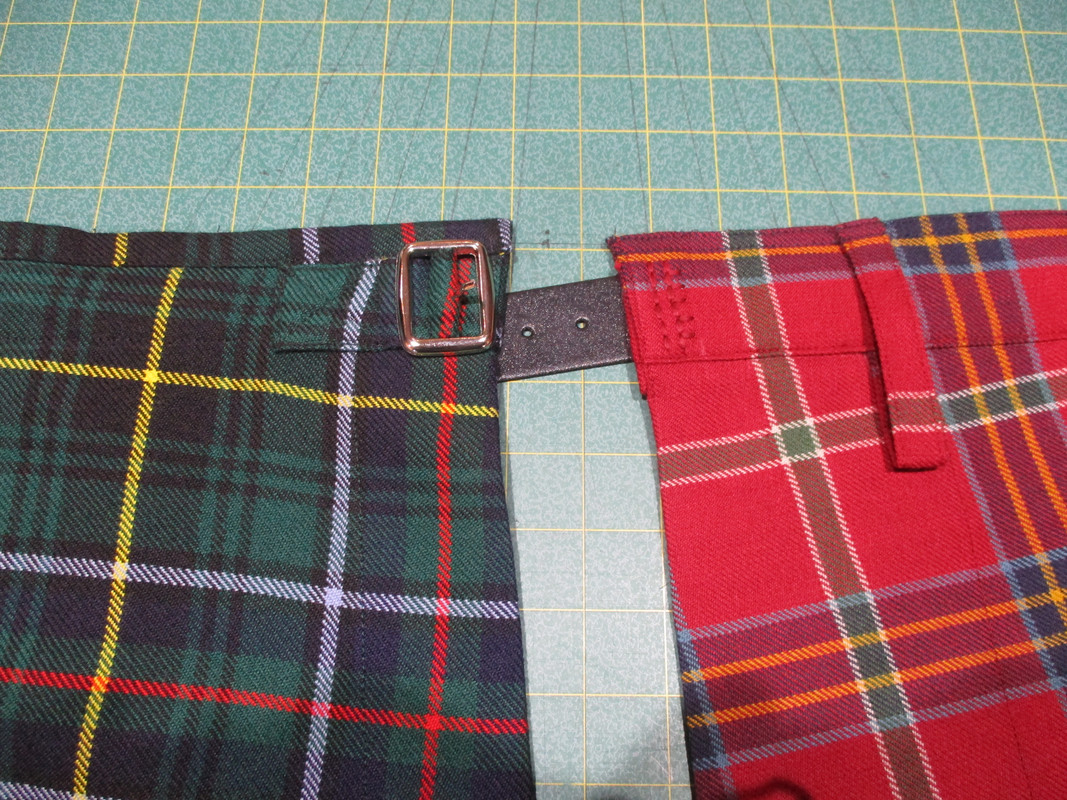|
-
20th December 20, 10:45 AM
#1
front apron attachment to the fell
I'm moving past the x kilt, and am looking for the reasons both structural and draping, for sewing the front apron into the left hand fell instead of letting it hang from the waistband only. Can anyone explain it to me? I asked else where and the discussion derailed into inner support and fabric choices. 'It's traditional ' isn't the answer I'm looking for.
-
-
21st December 20, 01:04 PM
#2
EDIT: please remove this post, sorry!
Proud Mountaineer from the Highlands of West Virginia; son of the Revolution and Civil War; first Europeans on the Guyandotte
-
-
21st December 20, 07:09 PM
#3
possibly for ease of movement, allowing the fabric in the large pleat to open out and the apron to stay over the under apron rather than being dragged sideways when you sit - or vault gates or step over a railing or low wall
I wear a kilt as part of my Morris kit and they get some wear, so the last one has no sewing in the fell at all, it all just hangs from the waistband - yes it flies, but I also wear black leggings so not a problem. When I sit down with the band the aprons fall straight down and don't get into fights with the bellows of the melodeon, which can cause havoc with the timing.
The reverse Kingussie style helps to keep it in some sort of order when I stand up again.
I presume to dictate to no man what he shall eat or drink or wherewithal he shall be clothed."
-- The Hon. Stuart Ruaidri Erskine, The Kilt & How to Wear It, 1901.
-
-
21st December 20, 08:37 PM
#4
As I tried to explain to you over on the facebook page -
The secret to how a kilt hangs and swishes is due to how it is constructed. The way that a kilt is constructed is different from the way the X Kilt and blue jeans are constructed.
In a kilt the outer apron is not just a flap hanging down in the front. In a kilt, the fabric is not hung from the waistband.
But if you wish to sew a garment built with the methods of construction of blue jeans, or the X Kilts then there is nothing stopping you from doing so. There is no rule that says you can't.
You will not have the internal strength across the front apron that a kilt has. The front apron will probably gape open, away from the Fell, and you will more than likely have puckers and distortion of the apron fabric, but for some that is not an issue.
You just change the construction and create a waistband like is used in trousers Hanging the pleats from this waistband would allow a garment to be constructed, as described without sewing the apron to the Fell.

Last edited by Steve Ashton; 23rd December 20 at 12:09 PM.
-
-
23rd December 20, 08:47 AM
#5
Ah - yes - I should not have said it all hangs from the waistband without putting in that it hangs according to how I place it to give that illusion.
The kilts with the most obviously untailored look are, by my craft and the use of skills, pulled and twisted into shape, there are shortenings done on the inner folds to pull pleats inwards, so the outer folds do not roll open, some pleats are pulled up or down by a small part of an inch so that the hems do not droop below the level o the rest - it is how to curve a 2 dimensional fabric to fit around a three dimensional object at the top and then fall as required when abandoned to air and gravity.
Behind the pleats, partly enclosed in the waistband is a strip of the stuff used for harnesses, like seatbelts. When placed on edge in a ring it doesn't allow for movement up and down, so it supports everything on one level - I am constructed so that there is a gap at the back over my spine about the width of a hand - which is why the reverse Kingussie style of kilt suits me so well - but it requires the sturdy support which the webbing provides, and it then goes on to help with all the rest of the kilt staying level.
I presume to dictate to no man what he shall eat or drink or wherewithal he shall be clothed."
-- The Hon. Stuart Ruaidri Erskine, The Kilt & How to Wear It, 1901.
-
 Posting Permissions
Posting Permissions
- You may not post new threads
- You may not post replies
- You may not post attachments
- You may not edit your posts
-
Forum Rules
|
|




















Bookmarks